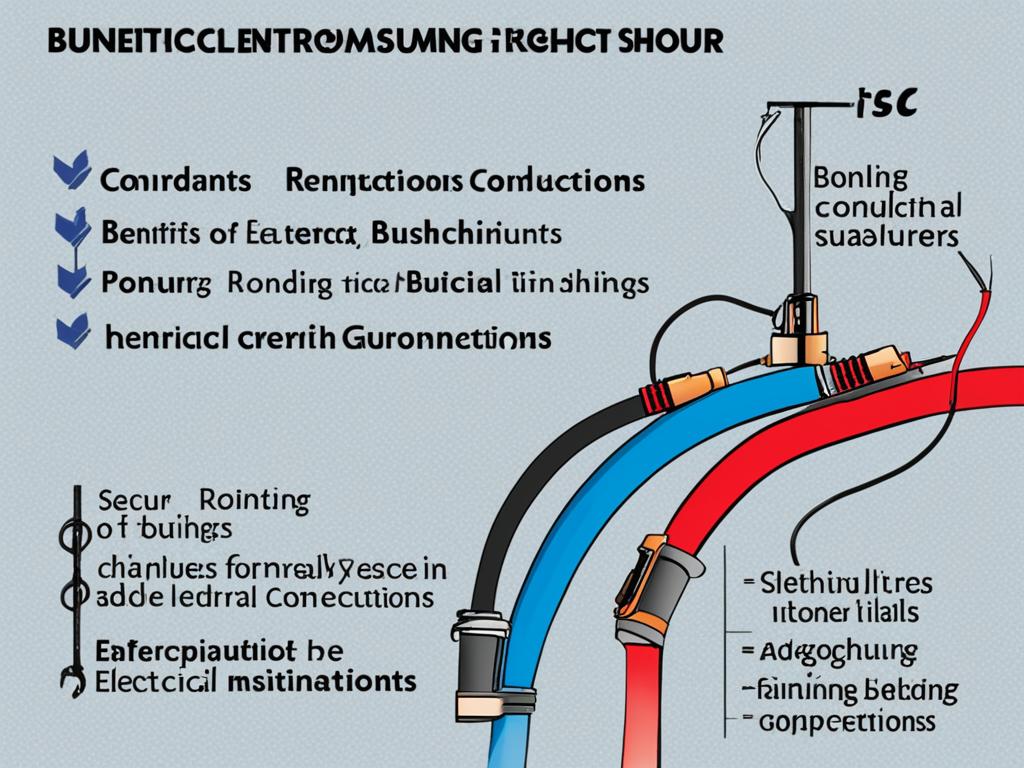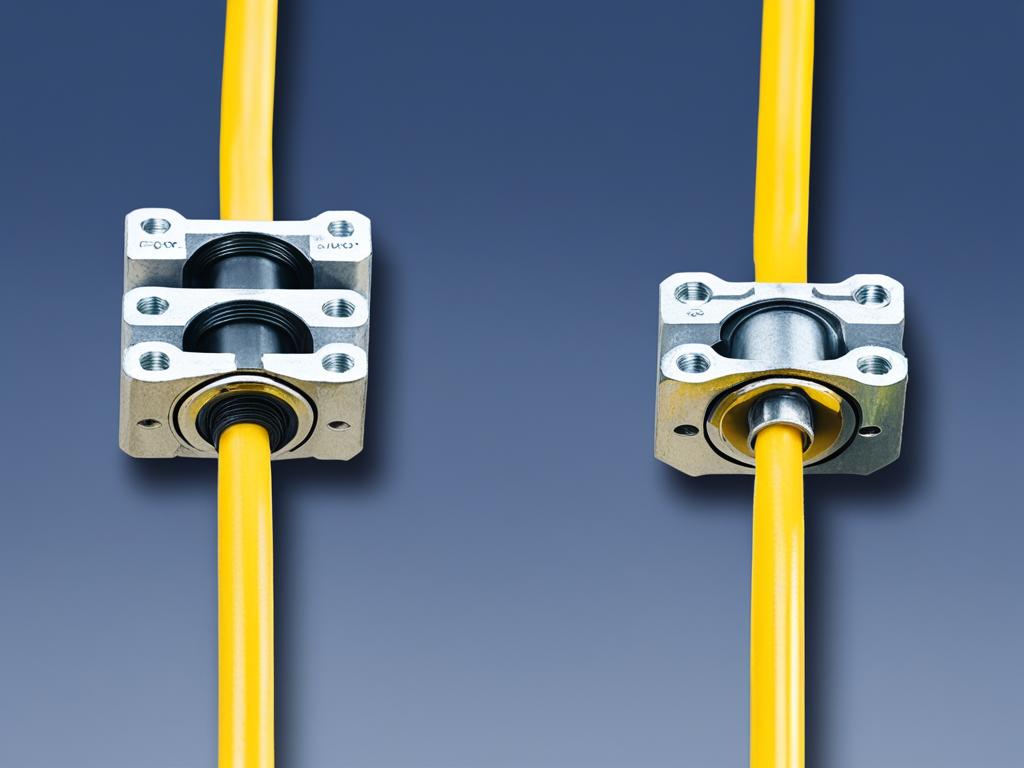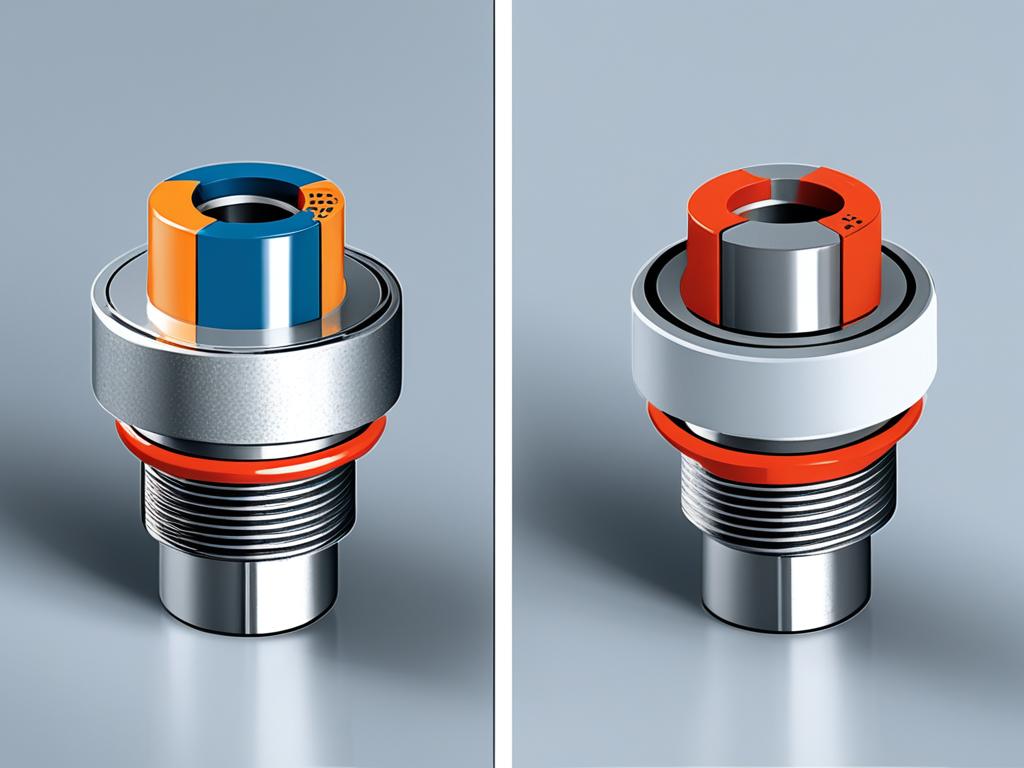In electrical installations, it is essential to understand the difference between bonding bushings and grounding bushings. These two components play crucial roles in ensuring electrical safety and compliance with codes. Let’s explore the distinctions between bonding bushings and grounding bushings.
Key Takeaways:
- Bonding bushings establish a connection between metal conduits and grounded electrical systems.
- Grounding bushings are designed to provide electrical continuity required by the National Electrical Code (NEC).
- Bonding bushings are used for bonding purposes beyond impaired connections, while grounding bushings are suitable for various conduit types.
- Both bonding bushings and grounding bushings ensure proper grounding and bonding to prevent electrical faults and hazards.
- Installation best practices should be followed for both types of bushings to ensure electrical safety.
Benefits of Using Bonding Bushings
Bonding bushings provide numerous benefits in electrical installations. They play a crucial role in establishing a connection between a metal conduit and a grounded electrical system, ensuring proper grounding and bonding. This connection is essential for protecting against electrical faults and ensuring electrical safety.
One key advantage of using bonding bushings is their effectiveness as the sole means of grounding for simple electrical systems with metal boxes and metal pipe. They offer a reliable and efficient method of grounding that helps maintain the continuity of the ground path. By establishing a solid electrical connection, bonding bushings prevent potential hazards such as electric shocks and damage to electrical equipment.
Bonding bushings are widely used in applications that require bonding in addition to the traditional method of grounding with an equipment grounding conductor connected directly to the metal box. These bushings provide an additional layer of protection, ensuring a robust grounding system that meets the necessary safety standards.
“Bonding bushings are essential components in electrical installations, helping to establish a strong and reliable ground path. They provide an additional layer of protection and contribute to overall electrical safety.”
When to use bonding bushings:
- In simple electrical systems with metal boxes and metal pipe
- In applications that require bonding in addition to the traditional grounding method
- When there is a need to prevent potential hazards such as electric shocks or damage to electrical equipment
To better understand the benefits of using bonding bushings, refer to the table below:
| Benefits of Using Bonding Bushings |
|---|
| Establishes a strong connection between metal conduit and grounded electrical system |
| Ensures proper grounding and bonding |
| Protects against electrical faults and potential hazards |
| Reliable and efficient method of grounding |
| Supports applications that require additional bonding |
Overall, bonding bushings offer significant benefits in electrical installations, contributing to a safe and reliable electrical system.

Key Takeaways:
- Bonding bushings establish a connection between a metal conduit and a grounded electrical system.
- They provide proper grounding and bonding, ensuring electrical safety.
- Bonding bushings are effective in simple electrical systems with metal boxes and metal pipe.
- They prevent potential hazards and damage to electrical equipment.
- These bushings are commonly used in applications that require additional bonding.
Advantages of Grounding Bushings
Grounding bushings provide numerous advantages in electrical installations. They ensure the required electrical continuity at service equipment and for circuits rated over 250V, allowing for safe and efficient operation. Grounding bushings are versatile and can be used with various types of conduit fittings, tubing, threaded rigid metal and intermediate metal conduits, or unthreaded rigid metal and intermediate metal conduits. They may also have provisions for the connection of bonding or grounding wires, further enhancing the electrical integrity of the system.
One of the key advantages of grounding bushings is their ability to address bonding needs in cases where a metal conduit needs to be bonded to a metal box or enclosure beyond the capabilities of concentric or eccentric knockouts. By providing an additional means of bonding, grounding bushings ensure a reliable ground path, minimizing the risk of hazardous conditions caused by poor connections.
Grounding bushings are commonly utilized in various applications, including service raceways attached to service equipment. They play a crucial role in maintaining electrical safety and compliance with codes, making them an essential component in electrical installations.
Grounding Bushing Applications
Grounding bushings find widespread use in a range of electrical applications due to their versatility and effectiveness. Some common applications include:
- Service equipment installations
- Circuits rated over 250V
- Conduit fittings
- Threaded rigid metal and intermediate metal conduits
- Unthreaded rigid metal and intermediate metal conduits
By providing the necessary electrical continuity and facilitating proper grounding, grounding bushings ensure the smooth and safe operation of electrical systems in various settings.

Conclusion
When it comes to choosing between bonding bushings and grounding bushings, it is crucial to consider the specific requirements of the electrical installation. Both methods are approved by the National Electrical Code (NEC) and serve different purposes in ensuring proper grounding and bonding.
Bonding bushings are particularly effective in situations where a metal conduit needs to be securely bonded to a metal box or enclosure beyond an impaired connection using concentric or eccentric knockouts. These bushings play a vital role in maintaining the continuity of the ground path, protecting against potential hazards, and ensuring electrical safety.
On the other hand, grounding bushings are essential for providing the necessary electrical continuity at service equipment and for circuits rated over 250V. These bushings can be used with various types of conduits and offer provisions for connecting grounding or bonding conductors. By following the best practices for installing bonding and grounding bushings, you can ensure proper electrical safety and compliance with codes.
